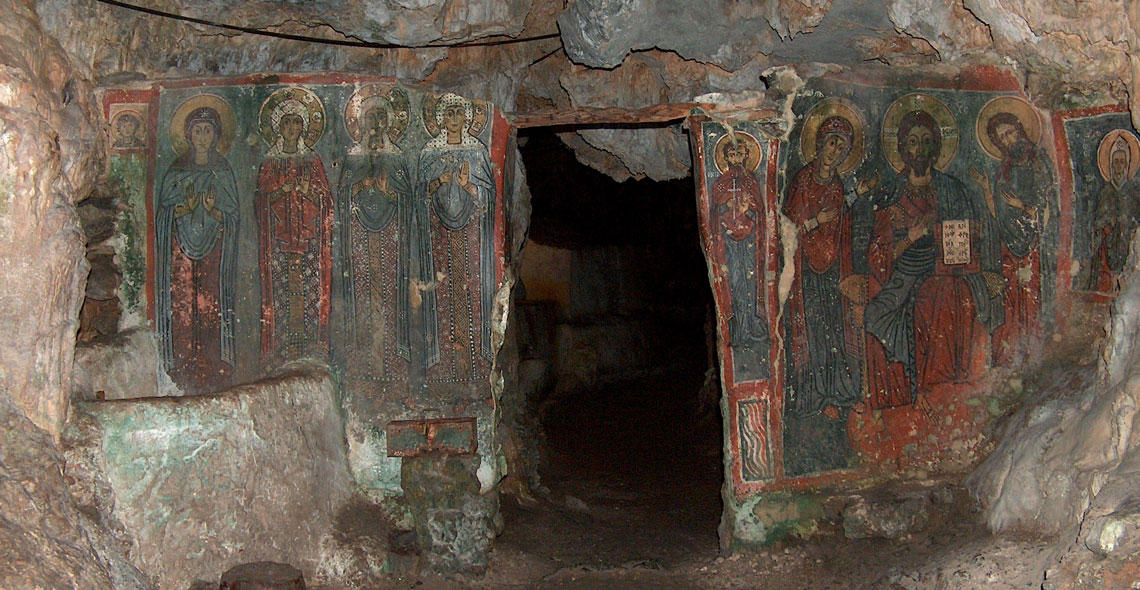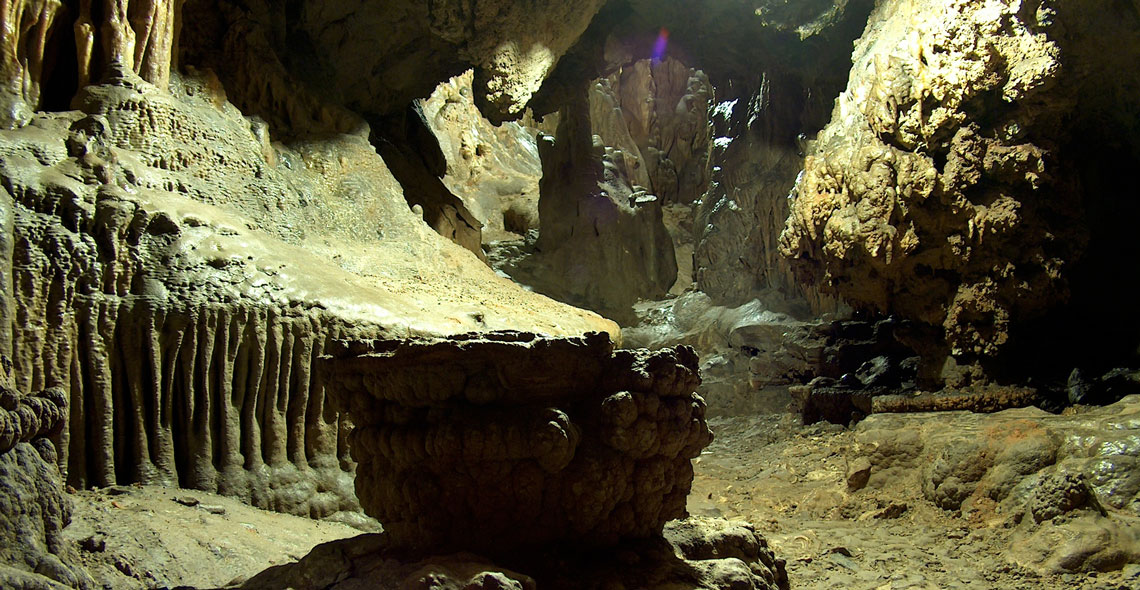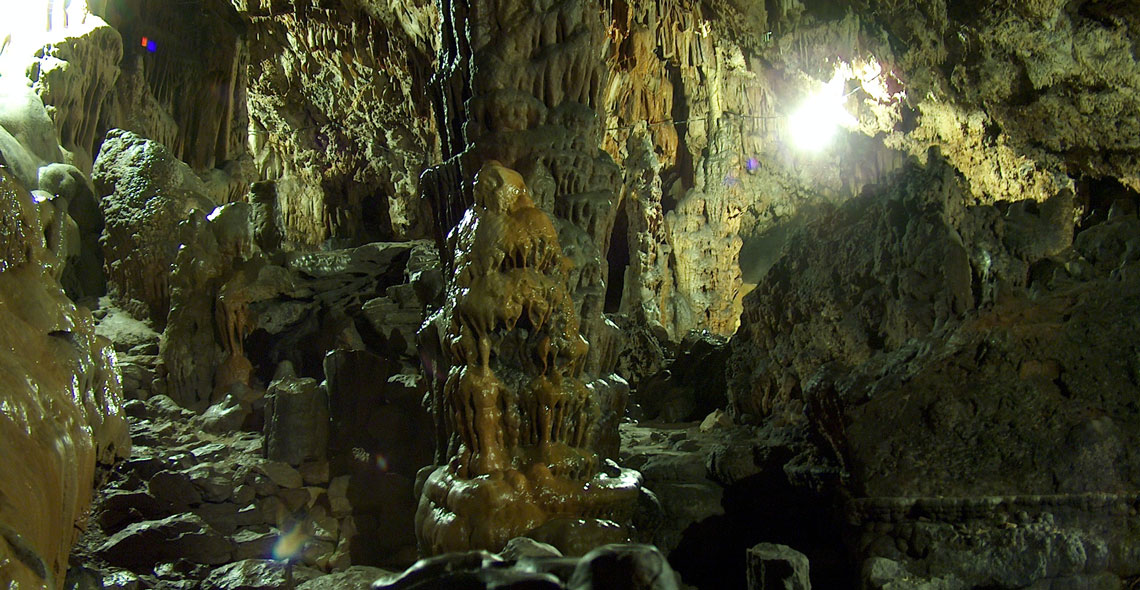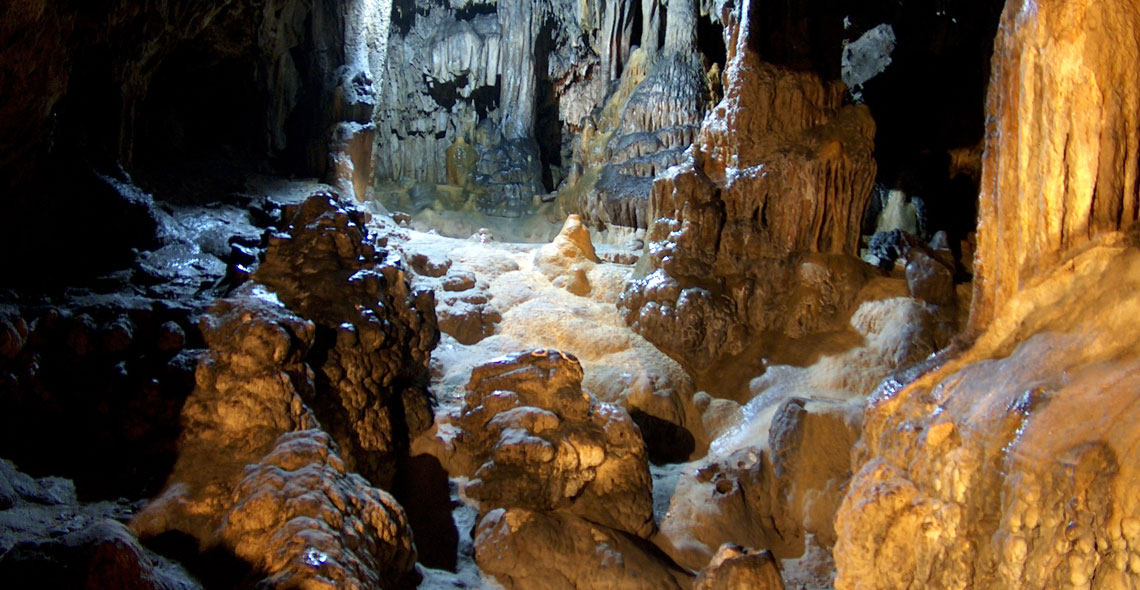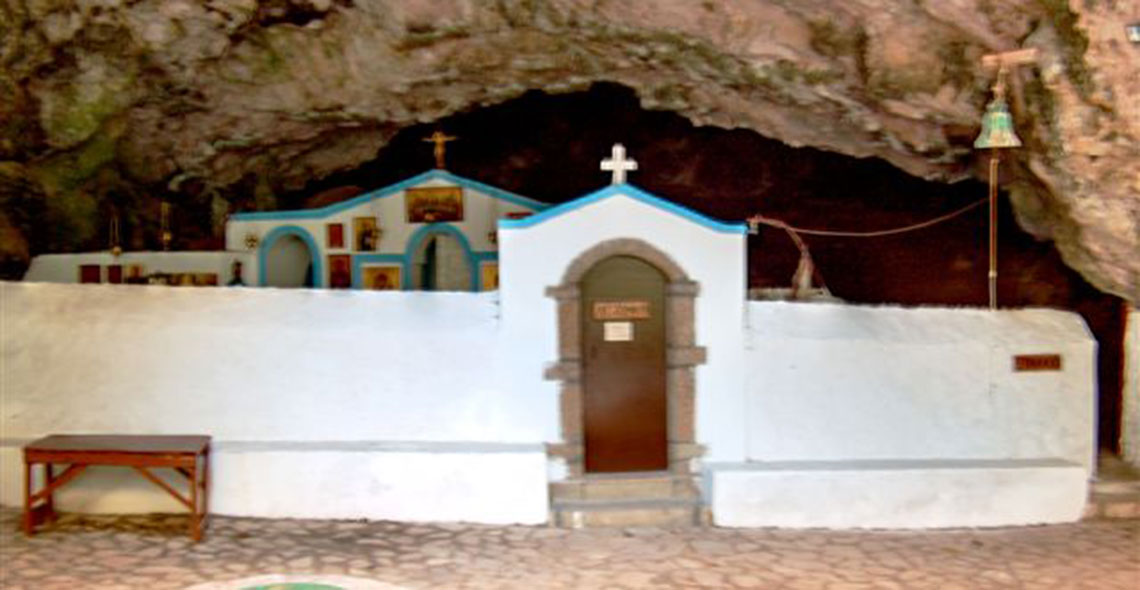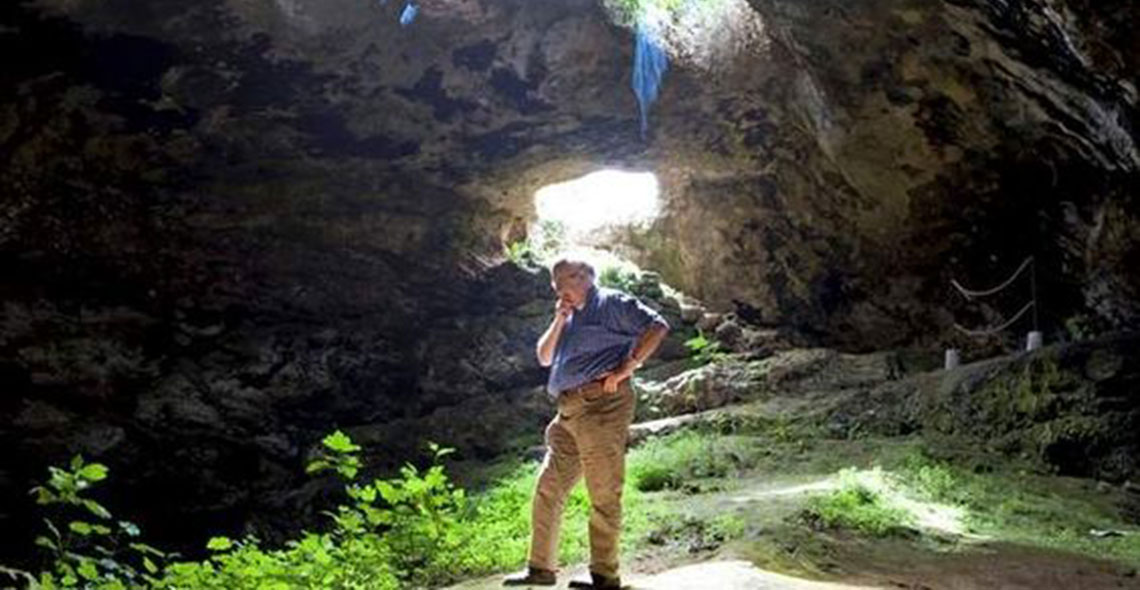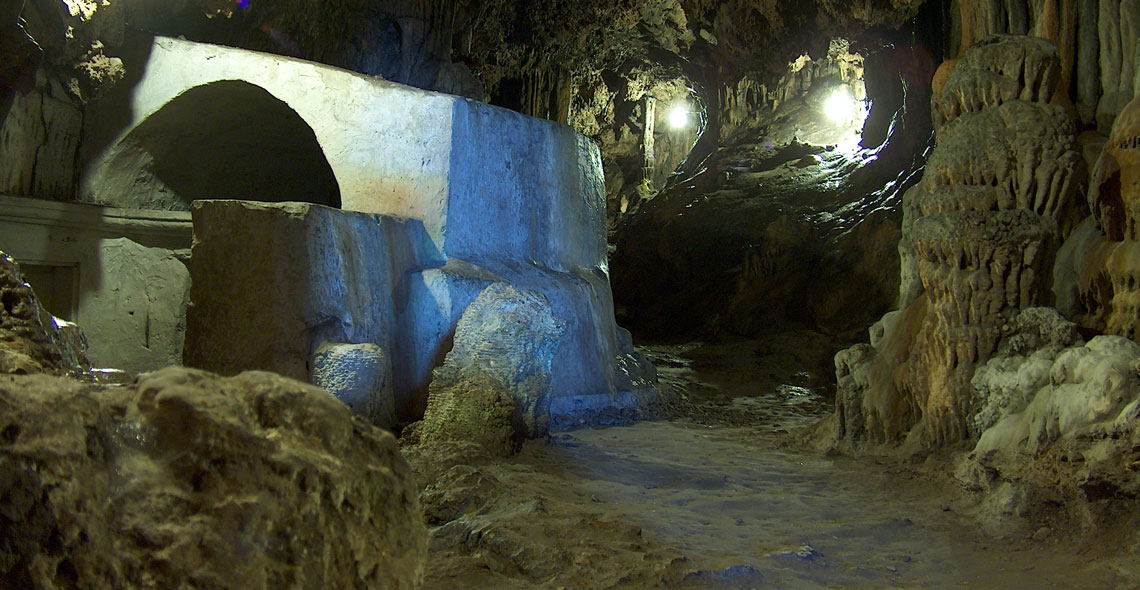The cave of Agia Sophia in Mylopotamos
This is an absolutely beautiful cave. It is located to the west of the village of Mylopotamos at an altitude of 50 m in a spectacular area, the small gulf of Kokala. The first people to have shown a consistent interest in the cave are Ioannis Petrocheilos and his wife Anna. As you walk in you will notice the small chapel of Agia Sophia with its wooden temple sheltering very well preserved 18th-century paintings. Areas accessible to the public form a path 200 m long where visitors can observe stalagmites and stalactites through a network of rooms and small corridors.
The cave of Agia Sophia in Kalamos
This cave is located right in the middle of a glen. This is a blissful place that is often submerged by river water during the wintertime. The cave itself has no particularly outstanding features but the place has a strong aura that will fill visitors with wonder. The small church at the entrance of the cave is dedicated to “Agia tou Theou Sophia” (the holy wisdom of the gods). To visit the cave you will need to take the road that leads from Kalamos to Kapsali then turn left at the intersection in the small village of Spilies.
The cave of Chousti
This is an underground cave and the entrance consists of a stairway sculpted on the floor’s rock. It is located to the east of the village of Diakofti. Archaeological digs took place over the past few years and revealed traces of life and human dwellings dating back to 3800 B.C. The cave was used during other periods of time, including classical and Roman times. Archaeological finds suggest that the site was used as a hallowed area dedicated to the goddess Venus.


 Ελληνικά
Ελληνικά